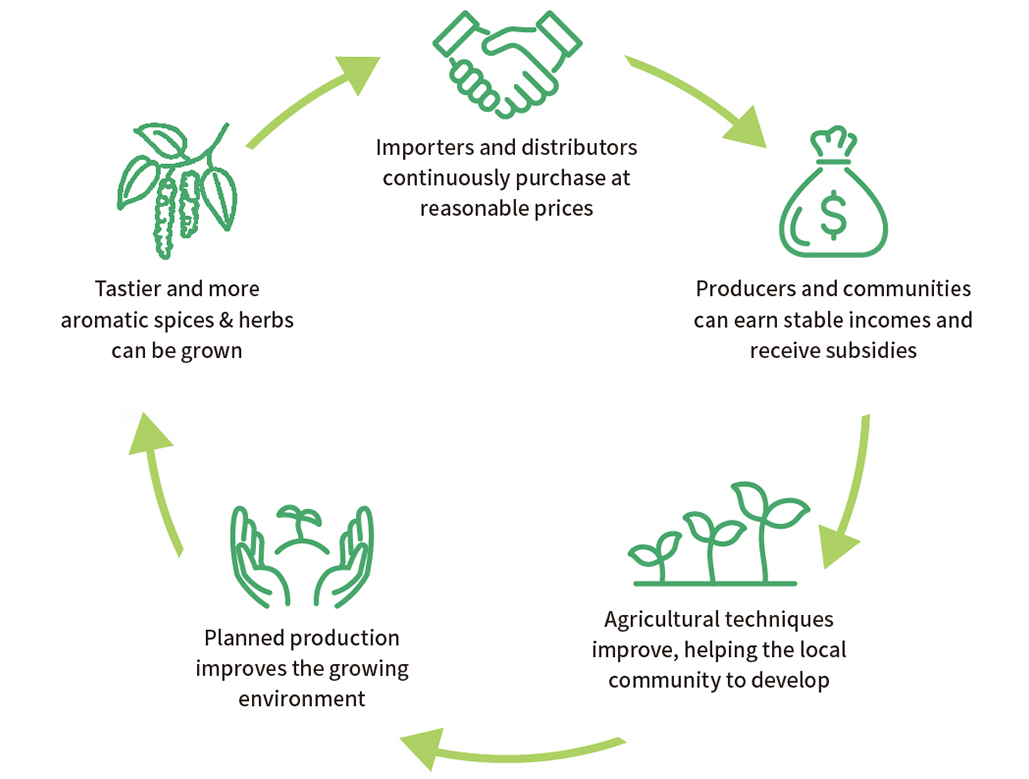




Learn about cultivation
How many spices & herbs are you familiar with? It's estimated that several hundred types of spices are used around the world, while herbs number in the tens of thousands.
As such, there are also a variety of ways to cultivate and harvest them. We will focus on pepper, chili peppers, turmeric, cumin, and cinnamon, and show you how these five spices are cultivated.
Always having spices & herbs on the table is not something that we should take for granted. As nature's bounty, spices & herbs are highly susceptible to changes in the climate, and so we are devising ways to maintain stable production at producing areas. There are also many producers involved with cultivation, and we need to take care of their livelihoods so that we may continue to procure spices & herbs sustainably.
Let's look at the kinds of things we are doing so that we can continue to serve spices & herbs at the dining table for many years to come.

In developing countries, producers of spices & herbs cannot continue to work unless they receive a fair price for the produce that they grow. The "Fairtrade" strategy was created to address this issue, wherein raw materials and produce are purchased directly from producers at a reasonable price.
Thanks to this system, producers receive a reasonable price, which leads to a virtuous cycle of bettering their lives, facilitating stable production, improving the growing environment of spices & herbs, and elevating quality.
COLUMN
Improving living conditions in producing areas through organic spices
To protect the livelihoods of producers of spices & herbs, S&B Foods has obtained International Fairtrade certification as an importer and distributor. We have been developing certified products since 2009, as part of our "Organic Spices" series.
As well as acting as a guarantee to producers that we will purchase at higher than market price, a "Fairtrade Premium" (subsidy) is also paid directly to producers' associations based on the quantity of raw ingredients purchased. This subsidy is used to improve living conditions in producing areas through the purchase of things like agricultural equipment, children's educational materials, and communal water tanks.
We have also undertaken initiatives such as implementing training courses on organic farming methods, leading to stable procurement of organic spices together with environmental conservation.
As spices & herbs are highly susceptible to changes in the climate of the producing area, it is not easy to reliably procure high-quality raw ingredients.
We have various ways of guaranteeing a steady supply, such as relying on multiple producing areas and promoting contract farming.